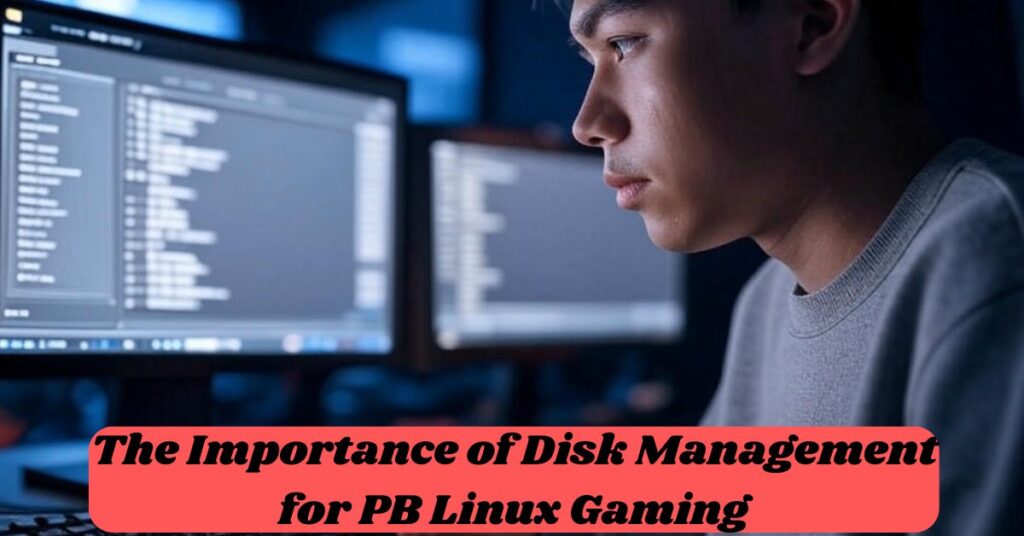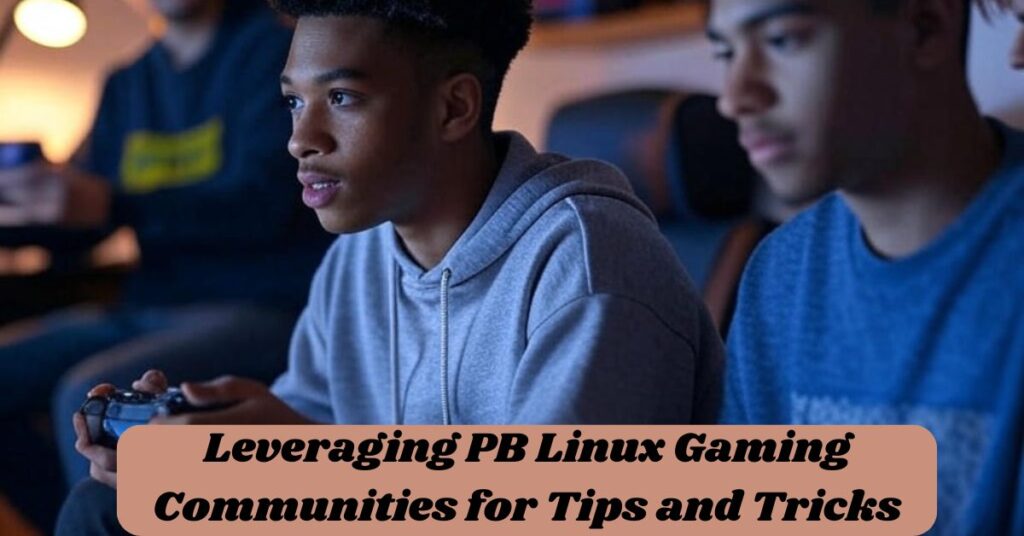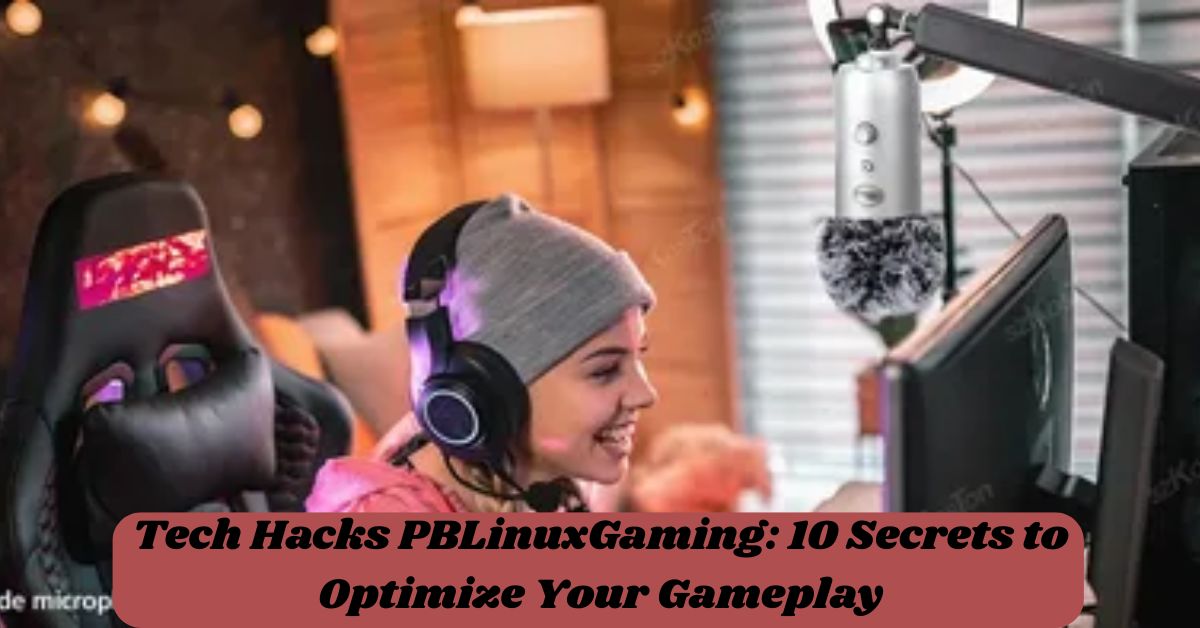Linux gaming has evolved dramatically in recent years. More games run smoothly on Linux than ever before. PBLinuxGaming enthusiasts know that proper optimization is essential. Your gaming experience depends heavily on system configuration.
This guide provides practical solutions for common performance issues. Each technique has been tested across multiple distributions. Follow these ten tech hacks to transform your Linux gaming setup today.
Optimizing System Performance for PB Linux Gaming
Your system’s foundation determines gaming performance. Kernel updates directly impact how games run on Linux. Always use kernel version 5.15 or newer for best results. Remove unnecessary background processes to free up system resources. Background applications consume valuable RAM and CPU cycles. Use System Monitor or htop to identify resource-hungry programs.
- Update your kernel regularly for improved hardware support and performance
- Remove startup applications that you don’t need
- Set CPU governor to “performance“ mode for gaming sessions
- Install preload to cache frequently used applications
- Disable desktop effects and animations while gaming
- Use lightweight desktop environments like XFCE or LXDE on older hardware
- Close web browsers and other memory-intensive applications before launching games
- Consider using zRAM to improve memory management on systems with limited RAM
- Keep your system updated with the latest packages and security patches
- Use proper swap configuration based on your system’s memory capacity
The kernel manages every aspect of your system. Newer kernels include optimized schedulers for gaming workloads. These improvements help distribute processing power more efficiently. Many distributions offer specialized gaming kernels. Options like Xanmod or Liquorix include performance patches specifically for gaming. These kernels reduce input lag and improve frame timing.
The Power of GPU Drivers in PB Linux Gaming
Graphics drivers are critical for gaming performance. The right driver can dramatically improve frame rates. Linux offers both open-source and proprietary driver options. NVIDIA users should install the proprietary drivers for best results. AMD users typically get great performance from the open-source Mesa drivers. Intel integrated graphics work best with the latest Mesa packages.
- Install GPU drivers from official repositories for stability
- NVIDIA users should use the proprietary drivers (nvidia-drivers)
- AMD users should use mesa drivers with AMDGPU support
- Keep graphics drivers updated monthly for performance improvements and bug fixes
- Use distribution specific tools to manage driver installation (Additional Drivers in Ubuntu)
- Install Vulkan support packages for your specific GPU
- Add 32-bit driver libraries for compatibility with older games
- Configure drivers properly using manufacturer tools (NVIDIA X Server Settings)
- Test different driver versions if you experience issues
- Monitor GPU temperature and throttling during gameplay
Driver performance varies between hardware generations. Newer GPUs receive better optimization in recent drivers. Proprietary NVIDIA/AMD graphics drivers often outperform open-source alternatives for gaming.
Mesa drivers have improved dramatically for AMD hardware. Many games now run faster on AMD cards using open-source drivers. Always install the 32-bit driver components for complete compatibility.
Using Vulkan for Better Performance in PB Linux Gaming
Vulkan API offers significant performance advantages over OpenGL. Many modern games support Vulkan natively on Linux. This modern graphics API reduces CPU overhead. It enables better utilization of multi-core processors. Games running with Vulkan typically show 15-40% higher frame rates. Vulkan provides more direct hardware access and better multi-threading.
- Install Vulkan libraries and headers on your system
- Force Vulkan rendering in Steam games using launch options
- Enable DXVK for translating DirectX to Vulkan in Wine
- Verify Vulkan support using the vulkaninfo command
- Use Vulkan-compatible game versions when available
- Add “-vulkan” launch parameter in Steam game properties
- Install Vulkan tools for debugging graphics issues
- Update Mesa to latest version for improved Vulkan support
- Configure game-specific Vulkan parameters with environment variables
- Benchmark games in both OpenGL and Vulkan modes to compare performance
Vulkan performance improves with each driver update. Games designed for Vulkan run especially well. Even older titles benefit when using translation layers. The performance difference is most noticeable on lower-end hardware. CPU-limited systems gain the most from Vulkan’s efficient resource management. Vulkan reduces stuttering and improves frame time consistency.
Tweaking In-Game Settings for Optimal Performance
Game settings directly impact performance. Not all graphical options affect performance equally. Some settings cause major performance drops with minimal visual improvement. Understanding which settings to adjust makes a huge difference. Start with the most demanding options first. Shadows, reflections, and anti-aliasing typically have the largest impact.
- Lower shadow quality for significant performance gains
- Reduce anti-aliasing levels or switch to faster methods (FXAA instead of MSAA)
- Turn down ambient occlusion or disable it completely
- Limit view distance in open-world games
- Disable motion blur and depth of field effects
- Lower texture quality if you have limited VRAM
- Reduce or disable dynamic lighting effects
- Use lower resolution scaling options (90% render scale)
- Set frame rate limits to match your monitor’s refresh rate
- Disable vertical sync for competitive games requiring faster response
Resolution has the single largest impact on performance. Reducing from 4K to 1440p can double your frame rate. Many games include built-in benchmarks to test your changes.
Use these tools to find the optimal balance between visuals and performance. Frame rate limiters help prevent GPU overheating and power consumption. They also make frame pacing more consistent for smoother gameplay.
Boosting PB Linux Gaming with Custom Linux Distributions
Specialized gaming distributions simplify the Linux gaming experience. These distros come pre-configured with gaming tools and drivers. They handle many technical aspects automatically.
Gaming-focused distributions save time on configuration. They provide optimized default settings for gaming workloads. Many include performance tweaks not found in standard distributions.
- Try Pop! OS for excellent hardware support and gaming performance
- Consider Garuda Linux for gaming-specific optimizations
- ChimeraOS offers a console-like experience for living room gaming
- Nobara Project includes gaming fixes not found in standard Fedora
- Use SteamOS for a console-like experience focused on Steam games
- Drauger OS prioritizes gaming performance above all else
- Ubuntu GamePack comes with many gaming tools pre-installed
- Manjaro Gaming Edition includes gaming software and tweaks
- Batocera Linux specializes in retro gaming and emulation
- Lakka turns your computer into a retro gaming console
Custom kernels in gaming distributions improve responsiveness. Many include the latest Mesa drivers automatically. Gaming distributions typically include Steam Play and Proton configurations.
They often feature custom themes optimized for TV displays. Some distributions automatically apply performance tweaks at boot. This makes them perfect for dedicated gaming systems.
Overclocking Your Hardware for Enhanced Performance
Overclocking can extract additional performance from your hardware. Modern CPUs and GPUs have performance headroom. Small overclocks can provide noticeable gaming improvements.
Even modest 5-10% clock speed increases help in CPU-limited games. GPU overclocking benefits nearly all 3D games. The performance gain varies based on your specific hardware.
- Use CoreCtrl to overclock AMD GPUs on Linux
- Adjust NVIDIA overclocking settings through nvidia-settings
- Monitor temperatures closely when overclocking
- Increase clock speeds gradually in small increments
- Test stability after each adjustment
- Improve cooling before attempting significant overclocks
- Use benchmark tools to validate performance improvements
- Consider undervolting for better thermal performance
- Create custom fan curves for better cooling under load
- Save proven stable profiles for easy application
Memory overclocking helps in memory-bandwidth limited scenarios. Modern games often benefit from faster RAM. GPU memory overclocking improves texture loading and high-resolution gaming.
Always ensure adequate cooling before overclocking. Temperature limits often determine maximum stable overclocks. Unstable overclocks can cause crashes and system instability. Always test thoroughly after making adjustments.
Utilizing External Tools and Software for PB Linux Gaming
External utilities enhance the Linux gaming experience. Lutris simplifies managing games from multiple sources. It handles game-specific configurations automatically. GameMode optimizes system resources during gameplay.
MangoHud provides an overlay with performance statistics. These tools solve common Linux gaming challenges. They make the experience more seamless and user-friendly.
- Install Lutris for managing non-Steam games
- Use GameMode to automatically optimize system performance while gaming
- Try MangoHud for in-game performance monitoring
- Install Feral GameMode for automatic CPU optimization
- Use ProtonUp Qt to manage different Proton versions
- Try GOverlay for a graphical interface to configure game overlays
- Use Heroic Games Launcher for Epic Games Store titles
- Install Wine-GE custom builds for improved game compatibility
- Try Bottles for creating isolated game environments
- Use ProtonTricks for advanced Wine configuration
DXVK/VKD3D translates DirectX calls to Vulkan efficiently. This allows Windows games to run with near-native performance. Wine handles the basic Windows API translation layer. Proton combines these technologies with additional gaming-specific patches.
These tools work together to improve compatibility with Windows games. Many titles now run as well as or better than on Windows itself.
The Importance of Disk Management for PB Linux Gaming

Disk management significantly impacts game loading times. SSD storage provides dramatic improvements over traditional hard drives. Game loading can be 5-10 times faster on SSDs. Proper file system choice and configuration matters.
The ext4 file system provides good general performance. BTRFS and XFS offer advantages in specific scenarios. Proper mount options can further improve gaming performance.
- Use SSDs for your game libraries whenever possible
- Enable TRIM for SSDs with the “discard” mount option
- Consider separating your gaming library to its own partition
- Run fstrim weekly to maintain SSD performance
- Choose appropriate file systems (ext4, XFS) for gaming partitions
- Monitor disk health with smartctl tools
- Adjust I/O scheduler settings for gaming workloads
- Use noatime mount option to reduce unnecessary disk writes
- Keep at least 15-20% free space on SSDs for optimal performance
- Defragment HDD game storage periodically (not needed for SSDs)
Symbolic links help manage game storage across multiple drives. You can install Steam on a small SSD but store large games on a secondary drive. Many modern games require 100GB or more storage space.
Steam Play compatibility layers add overhead to storage requirements. Shader caches improve performance but consume additional space. Regular maintenance prevents fragmentation and performance degradation over time.
Read This Blog : Fibertel OnThisVerySpot: Revolutionizing Internet Access with Unmatched Speed and Reliability
Networking Hacks for PB Linux Gaming
Networking optimization reduces lag in online games. Wired connections provide the most stable experience. Router quality and configuration directly impact gaming performance. Linux networking stack settings can be tuned for gaming.
Lower latency means more responsive gameplay. Prioritizing game traffic improves online gaming experience. Small adjustments can make a significant difference.
- Use wired Ethernet instead of Wi-Fi whenever possible
- Enable QoS on your router to prioritize gaming traffic
- Adjust TCP/IP stack settings for lower latency
- Disable network-heavy background applications while gaming
- Consider gaming-focused DNS servers for faster response
- Use the NetworkManager performance profiles
- Monitor bandwidth usage with nethogs or similar tools
- Reduce bufferbloat with modern queue management
- Install alternate network drivers if the default ones perform poorly
- Use VPN gaming modes for problematic ISP routing
Router position matters for Wi-Fi gaming. Minimize physical obstructions between devices. 5GHz Wi-Fi provides faster speeds but shorter range. Modern Wi-Fi 6 routers offer significant improvements for wireless gaming.
Gaming routers include optimized QoS settings automatically. Some Linux networking tweaks require sysctl configuration. Advanced users can compile custom network drivers with gaming optimizations.
Leveraging PB Linux Gaming Communities for Tips and Tricks

Gaming communities provide invaluable Linux gaming knowledge. Fellow gamers share solutions to common problems. ProtonDB collects compatibility reports from thousands of users. Community-maintained wikis document game-specific fixes.
Linux gaming forums help troubleshoot specific issues. These resources save hours of frustration and configuration effort. The Linux gaming community continues to grow and improve.
- Check ProtonDB before purchasing games to verify compatibility
- Join the r/linux gaming subreddit for latest news and fixes
- Participate in distribution-specific gaming forums
- Follow the Boiling Steam website for Linux gaming news
- Join Linux gaming Discord servers for real-time help
- Contribute your own compatibility reports to help others
- Follow Valve’s announcements for Proton updates
- Check GitHub issues for specific problems and workarounds
- Read Phoronix for Linux gaming performance news
- Participate in the Steam for Linux community
Game-specific communities often develop custom patches. User-created scripts solve common compatibility problems. Steam community guides provide valuable configuration advice. Discord servers offer real-time troubleshooting assistance.
Regular community engagement helps stay current with latest developments. Anti-cheat compatibility status changes frequently. Community resources track these changes more quickly than official sources.
Frequently Asked Questions
Is Linux good for gaming?
Linux gaming has improved dramatically. Thousands of games run natively or through compatibility layers. Performance is competitive with Windows in many titles. Steam Deck’s success has accelerated Linux gaming development.
Which Linux distribution is best for gaming?
Pop! OS, Manjaro, and Garuda Linux are excellent choices. They provide gaming tools and drivers pre-configured. SteamOS is perfect for living room gaming setups.
Does Vulkan improve gaming on Linux?
Yes, Vulkan provides significant performance improvements. It reduces CPU overhead and improves multi-threading. Games using Vulkan typically show 15-40% higher frame rates compared to OpenGL.
How do I check if a game works on Linux?
ProtonDB.com is the best resource. It provides compatibility ratings and fixes from the community. The Steam store also indicates Linux compatibility for native games.
Can I play games with anti-cheat on Linux?
Some games with anti-cheat now work on Linux. Easy Anti-Cheat and BattlEye have added Linux support. Check ProtonDB for specific game compatibility status.
Conclusion
Linux gaming has transformed from a limited experience to a viable alternative to Windows. Each of these optimization techniques builds upon the others. Start with the basics: updated kernels, proper drivers, and Vulkan support. Explore specialized tools like Proton, Wine, and Lutris. Fine-tune your system with GameMode and proper disk management. Join the community to stay informed about the latest developments.
Performance continues to improve with each kernel and driver update. More games become compatible every month. Anti-cheat solutions are increasingly supporting Linux. The Steam Deck has accelerated this progress significantly.
Linux gaming is no longer just for enthusiasts. It offers advantages in performance, customization, and privacy. The future of Linux gaming looks brighter than ever. These ten tech hacks will help you get the most from your PBLinuxGaming experience today.










